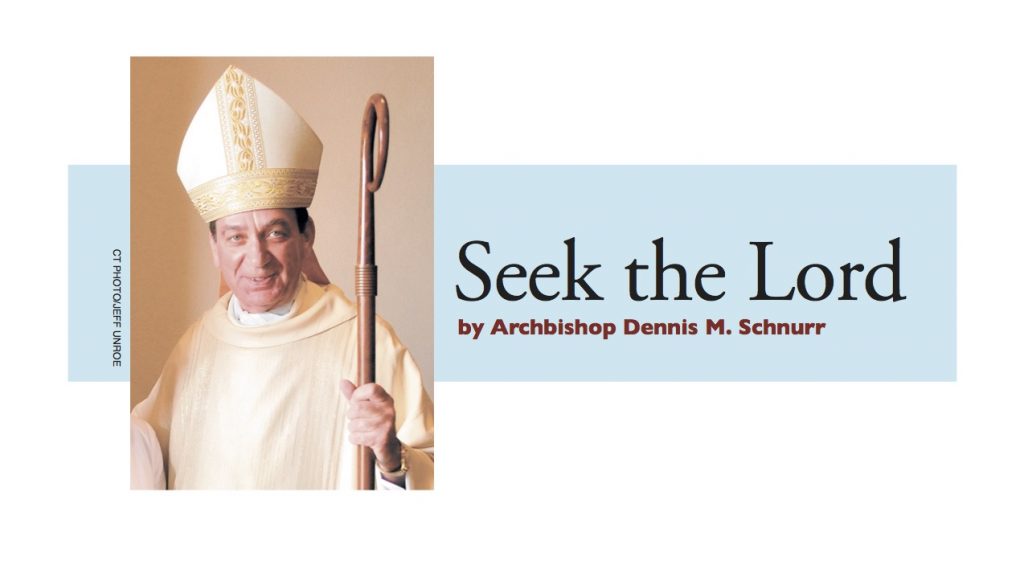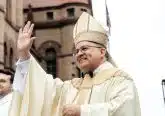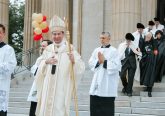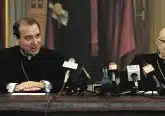Seek The Lord: Archbishop Schnurr, Celebrating the Saints and praying for the faithful departed.
 In early November, the Church calendar calls us to celebrate the saints and to pray for the faithful departed. We should take this seriously.
In early November, the Church calendar calls us to celebrate the saints and to pray for the faithful departed. We should take this seriously.
The month begins with All Saints Day, on which we honor and seek the help of all those in heaven, including those not officially recognized by the Church as saints. This is followed on Nov. 2 by All Souls Day, set aside to pray for the souls in purgatory.
Saints in heaven, souls in purgatory, and members of the Church here on earth are all part of the communion of saints. As the Catechism of the Catholic Church states, “The communion of saints is the Church” (CCC 946).
It is common at funerals for all involved to assume that the departed loved one is already in the presence of God. This can only be absolutely assured, however, in the case of canonized saints. For all others, it is “a holy and pious thought” to pray for the dead, as the Old Testament says (2 Mac 12:45). Doing so has been the consistent practice of the Church from the earliest days.
In the case of canonized saints, however, we pray to ask them for their help before God.
In everyday speech, it is common to hear of the Church making someone a saint. This is incorrect. The Church does not make saints. She recognizes saints through the long process of canonization. This procedure includes authentication of at least two miracles attained through the saint’s intercession.
The first American-born saint to be canonized, Elizabeth Ann Seton, is well known in this Archdiocese as the foundress of the Sisters of Charity. Now the first black Catholic priest in the United States is one of six African-Americans whose causes for canonization are under review.
Servant of God Augustus Tolton, a former slave born in Missouri, studied in Rome because no American seminary would admit him. He was ordained there in 1886, expecting to serve the African missions. Instead, he was directed to return to the United States to minister to black Catholics here. Known for his eloquent homilies, Fr. Tolton also displayed great determination in his ministry as he successfully led the development and construction of St. Monica’s Catholic Church as a black “national parish church” on Chicago’s South Side. He died in 1897 at age 43.
As part of our Archdiocesan observance of Black Catholic History Month, St. Luke Productions will bring the powerful play “Tolton: From Slave to Priest” to four locations in Cincinnati and Dayton, Nov. 3-7. For more information, go to www.aoc-tolton.org.
Canonization does not mean that an individual was perfect. Indeed, saints are sinners, too. We humans, except for Jesus Christ and the Blessed Mother, are all sinners. Precisely because the saints are human like us, they are the premier role models for us in our struggle toward holiness. That is why the Church lifts them up for veneration (not worship). They are heroes of the faith.
At the same time, saints are intercessors – friends that we can call on for heavenly help. We ask saints to pray for our intentions just as we ask our living friends and family to do so. We are all part of the communion of saints. The only difference is that saints in heaven are closer to Christ (CCC 956), and therefore in a better position to advocate for us.
On All Saints Day, let us ask all the saints in heaven for their help. On All Souls Day, and every day, let us pray: “May the souls of the faithful departed, through the mercy of God, rest in peace.”













